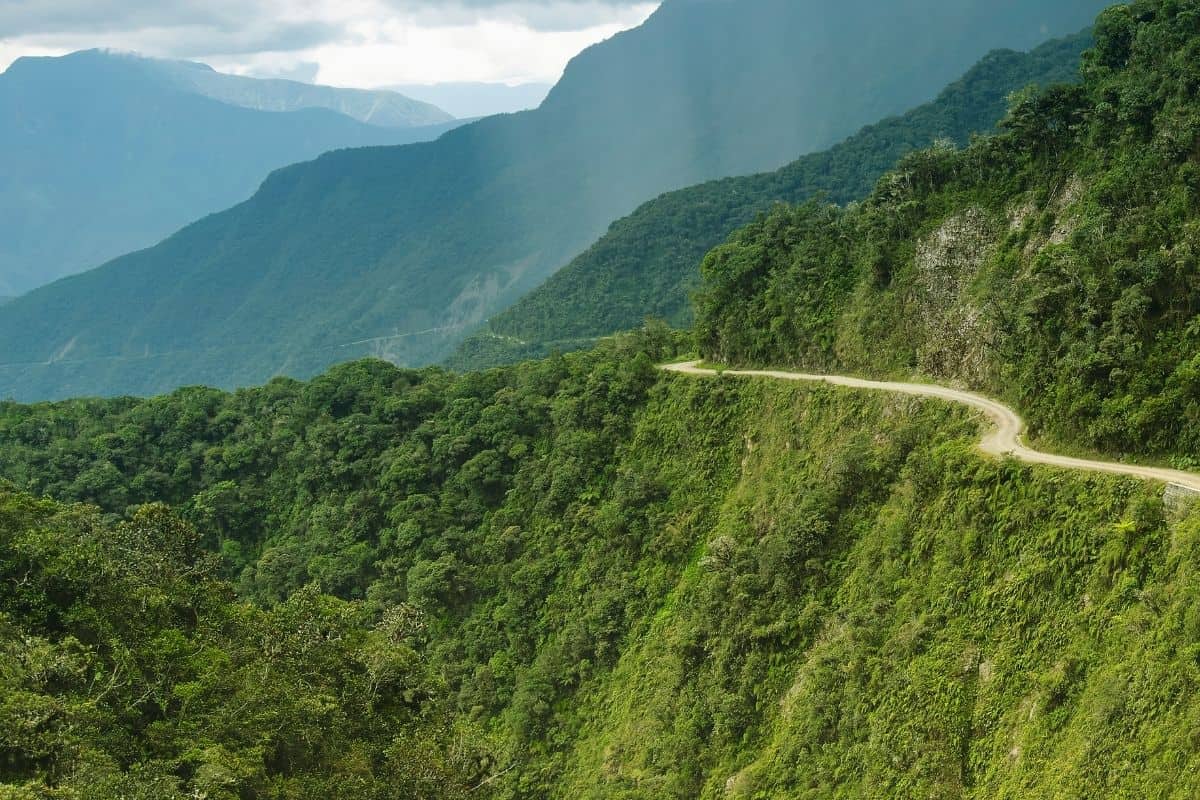
Go World Travel is reader-supported and may earn a commission from purchases made through links in this piece.
The Death Road in Bolivia creates intrigue in every traveller’s mind. The official name of the road in question is Yungas Road, but I quickly came to realise that nobody calls it that. Furthermore, I heard Death Road mentioned constantly from the time I arrived in the city of La Paz.
For backpackers who had been there, it was a badge of honour. They had visited and survived the most dangerous road in the world. For those who lived in La Paz, it was a road that everyone knew and many had a deep personal connection to.
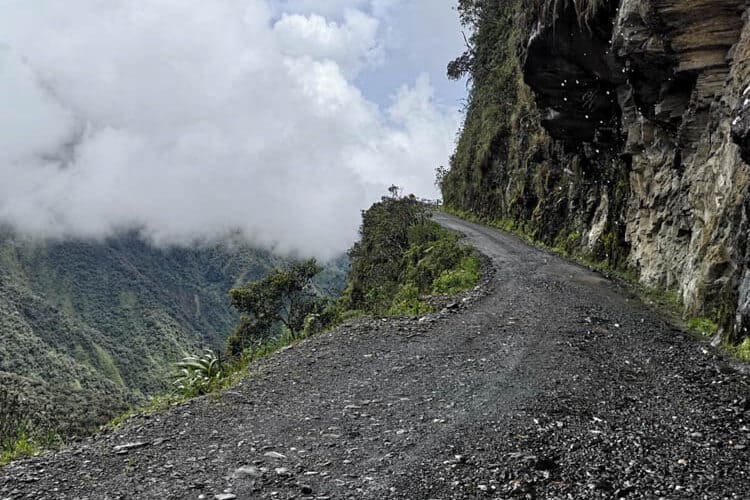
Facts About the Death Road in Bolivia
The road was constructed in the 1930s by Paraguayan prisoners during the Chaco War. They carved it into the sides of the mountains. Only approximately 3 metres wide, the road twists and turns down the mountain.
Passing under waterfalls and through dense vegetation, it constantly has drops of 1000 metres to the valley floor below. The Death Road climbs to over 4000 metres above sea level at La Cumbre Pass. Then, it’s a 43 mile (69km) stretch down to the jungle town of Coroico.
As the name would suggest, the road itself is deadly. Until 2007, when a new road was opened connecting La Paz and Coroico, it was the main highway to the Bolivian jungle. It is estimated that between 200 and 300 people died every year on the highway, leading the Inter-American Development Bank to declare it the “World’s Most Dangerous Road”.
However, as the road traffic began to decrease, and the international standing of the road began to increase, Death Road became a tourist attraction for the bravest travellers to Bolivia. Numerous tour companies appeared, offering thrill-seekers the opportunity to mountain bike down Death Road.
Even this has not been without tragedy. 13 cyclists have lost their lives on the road since the beginning of the 1990s.
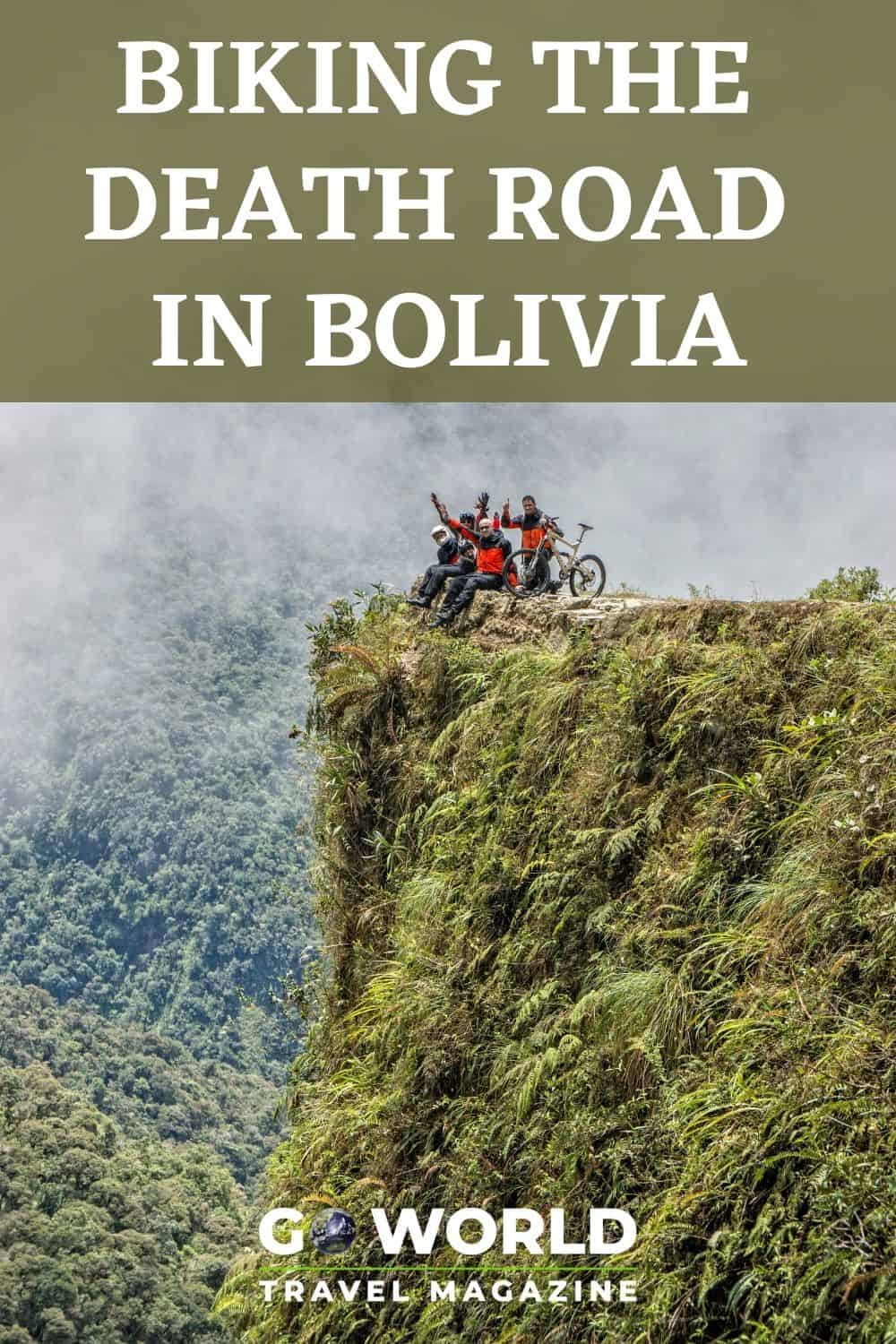
Nervous Anticipation
I knew all of this when I set foot in La Paz. However, the opportunity to say that I had completed one of the most dangerous and thrilling activities in the whole world was one I could not ignore.
I get nervous very rarely. When I went bungee jumping, I asked if they were ready to let me go, my desire to jump was just that great. However, the day before going down Death Road I really began to feel the nerves.
Plenty of activities make you sign your life away, absolving them of blame before you start. But never had I felt death was a real possibility until I was facing Death Road.
Eventually, the day came. I had called my parents the night before to warn them of what I was doing the next day. They were not best pleased. I awoke early and was ushered into a van with a group of 12 people. It was then I realised there was no turning back. This was it; I was going to cycle down the Death Road in Bolivia.
To prepare for a journey as extreme as this, you’ll want to learn Spanish basics before you go. With Rosetta Stone, you can learn Spanish and any other language you like with lesson plans catered to your schedule. Check out their lesson plans and their amazing lifetime subscription option here.
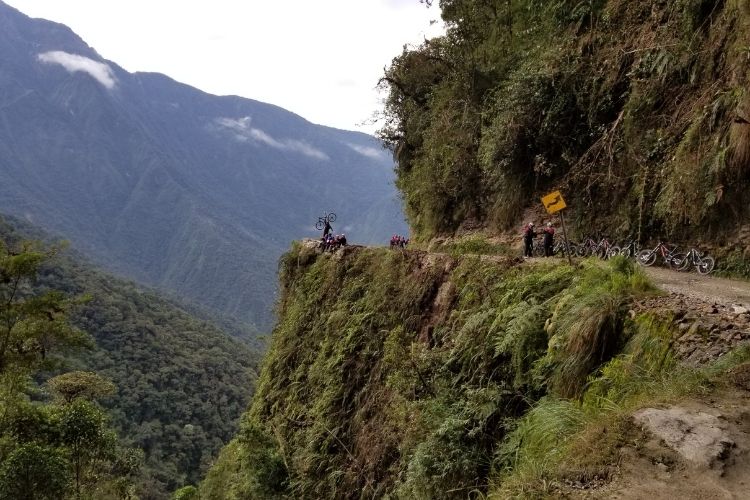
Getting Ready for the Death-Defying Bike Ride
We arrived at a large shed on the outskirts of La Paz. This was where we would be provided with all our equipment. It did give me a crumb of comfort to see the level of attention the tour providers gave to us when handing over our helmets, knee pads and gloves.
Each item was fitted to match our size perfectly and the bikes were thoroughly checked to ensure they were up to scratch. We were also given a large jumpsuit to wear over our clothes.
These resembled a 70s skiing outfit more than any of us would have hoped. Breakfast was also provided but I’m not sure many of us ate. The realisation that we had signed our lives away was beginning to hit home.
Before we knew it, it was time to head off for Death Road. We were dropped off at La Cumbre Pass where for the first time it became just us and our bikes. The first 20 km is on a perfectly tarmacked road.
All 12 of us were joking about how easy this was, overtaking one another at will. However, it quickly became clear that this was just the warmup. Nothing could prepare me for what came next.
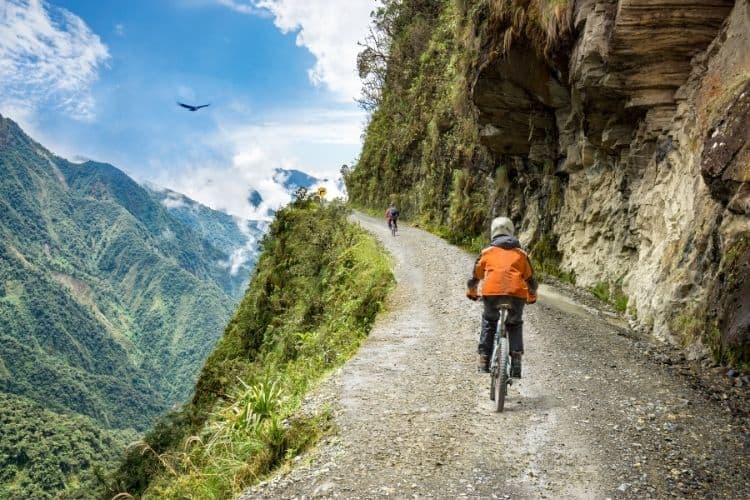
Cycling Death Road
As soon as we turned off the tarmacked road onto the gravel track, it seemed as though the weather instantly changed. It was colder, the clouds arrived restricting our view and it suddenly started to rain.
The leader of the tour set off at the front and then that was it. We had begun our trip down Bolivia’s Death Road. The brakes on my bike suddenly became my best friend. My fingers always hovered over them ready to break at any second.
The sheer concentration that was required to stay on the bike at the start of the descent was mind-blowing. All I could focus on was the road. Avoiding pothole after pothole, ensuring that I missed the wettest bits and above all, staying away from the edge.
As we descended further, I began to relax a bit more. I had time to look up and take in the road we were travelling down. It was now that I really noticed the drop that was just to the left of me. It truly was a sheer cliff, completely unforgiving.
Every few hundred metres there was another cross by the side of the road. Sometimes they had names or flowers to commemorate the thousands who had lost their lives on the very road I was cycling.
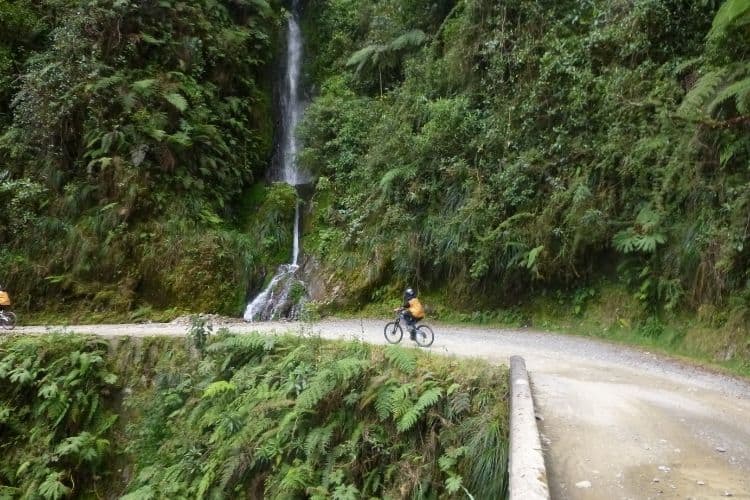
Waterfalls and Bike Falls
I passed through a waterfall, carefully as to not slip on the wet gravel. Just as I had navigated it successfully, I heard a yell. One of my group had fallen off.
As he approached the turn, he had yanked on his breaks too hard and gone straight over his handlebars. Thankfully, he was unhurt. However, for me, it brought back that nervous, twisted feeling in my stomach that I had done so well to lose.
We stopped frequently along the way. For photos, drinks and even an opportunity to zipwire along the side of the road. Each stop was a welcome relief. A few minutes where the concentration on avoiding injury was no longer dominating your mind.
Unlike bungee jumping which lasts a few minutes at most, the cycle down Death Road, Bolivia was 4 perilous hours long. It really is the ultimate test of not only your physical cycling ability but also your mental strength to concentrate for such a long period.
After numerous falls, flat tires and other mechanical problems, all of which were excellently dealt with by the tour leaders, we finally reached the end of Death Road and were taken to a hotel for lunch.
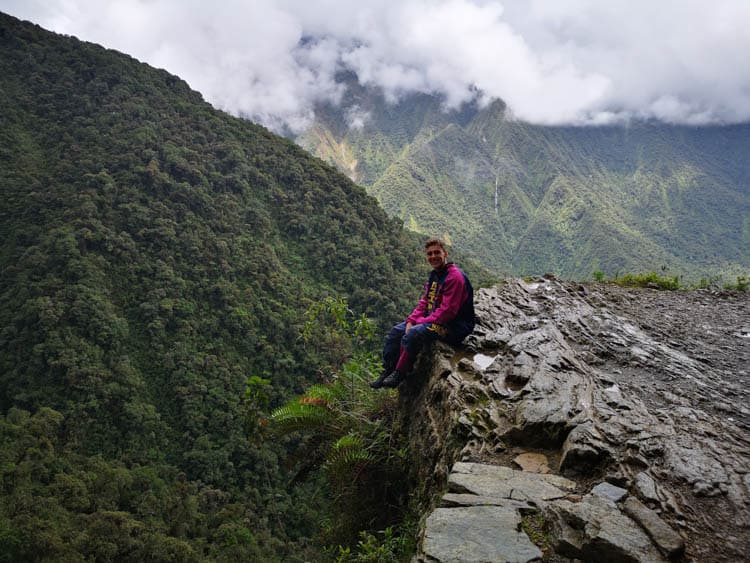
I Survived Death Road, Bolivia
Exhausted from our trip, it was wonderful to eat lunch and relax by the pool. We were given T-Shirts that read “I survived Death Road” and surviving really did feel like an accomplishment. Eventually, we set off on our 3-hour drive back to La Paz. Thankfully, we did not take Death Road back in the opposite direction.
As we got back to La Paz, I realised why so many backpackers had spoken to me about Death Road. It is unique and truly the ultimate thrill-seeking activity.
Book This Trip:
Biking Company I used https://www.facebook.com/Enhance-Biking-101370284625881/
Looking for more information on how to get around during your trip to Bolivia? Find VRBO and hotel reservations, local restaurant reviews, insider tips on the best sights near Death Road and more on TripAdvisor and Travelocity.
Get the ultimate Death Road experience on the Mountain Bike the Most Dangerous Road Tour. After your great biking adventure, plan some activities in Bolivia with GetYourGuide. Check out expert-led tours and book your spot in advance here.
Author’s Bio: Matthew Cogan is a young UK based backpacker who has been to 40 countries across 5 continents.
- Top 10 Things to Do in Ireland - April 25, 2024
- How to Get Around in Sydney: A Local’s Guide to Traveling Around Sydney - April 24, 2024
- The Low-Key Magic of Ghent, Belgium - April 22, 2024

Cyclists go down the road in the morning and vehicles go up the road in the afternoon. I did so in December 2015 in my 4×4 camper truck which was left hand drive so I was not looking over the cliff all the time. It was a tight fit in some areas where the road edge had eroded as there is not so much maintenance done except by some locals. It is a heck of an experience and I would not want to have done it when it was the main road and full of traffic. Fortunately for the locals there has been a nice tarmac road alternative for a few years now.